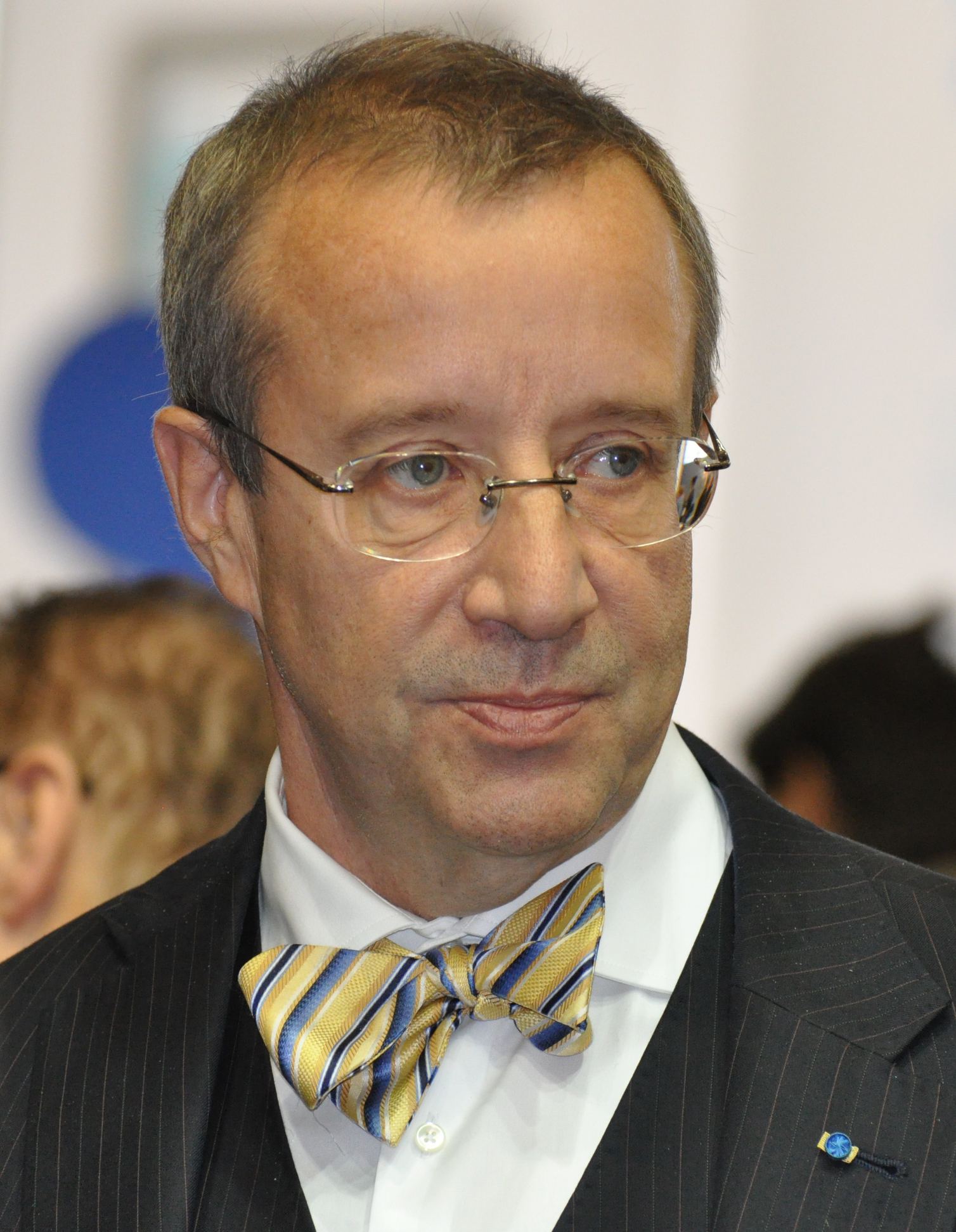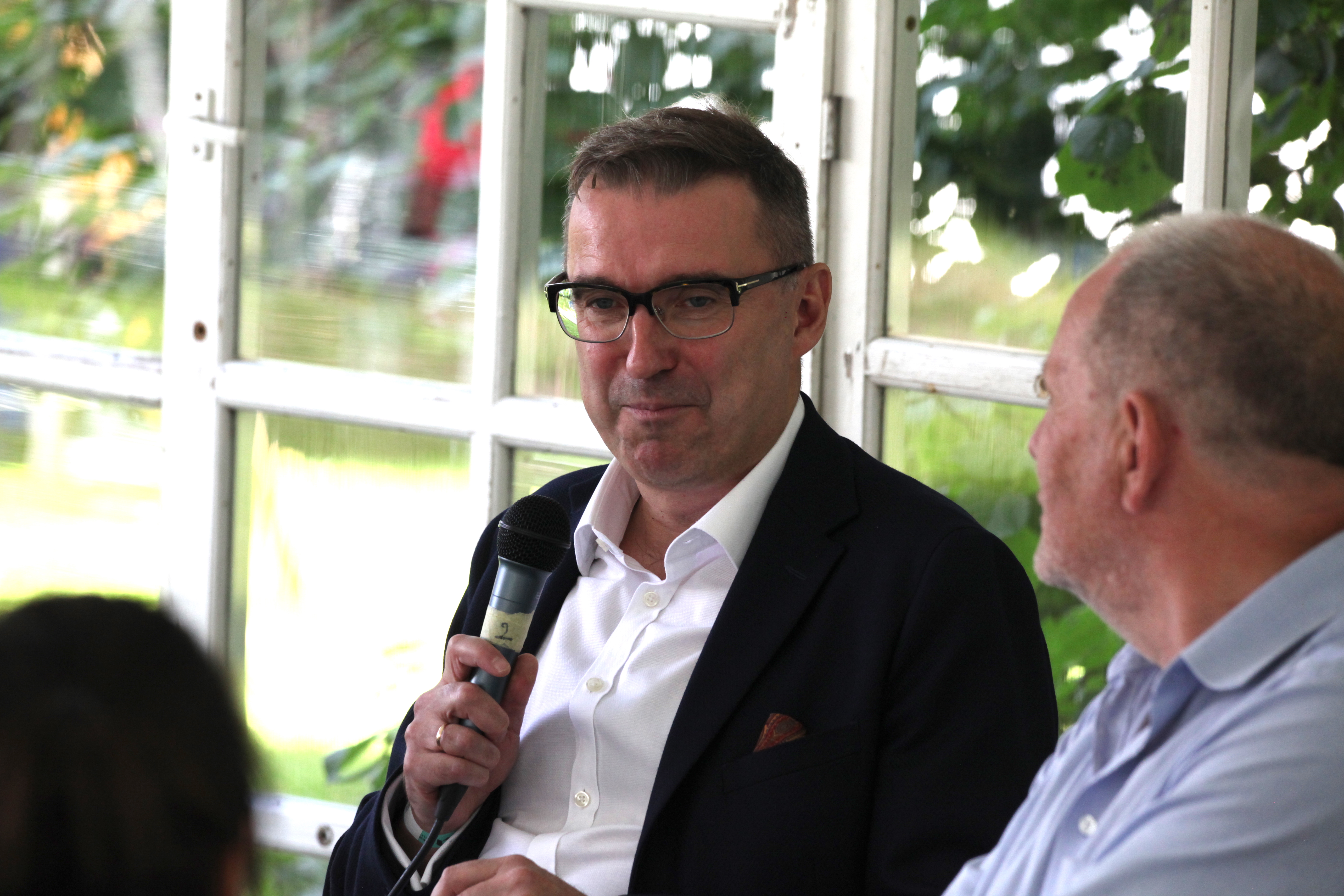|
Riigikogu Electoral District No. 2
Electoral district no. 2 ( et, Valimisringkond nr 2) is one of the 12 multi-member electoral districts of the Riigikogu, the national legislature of Estonia. The electoral district was established in 1995 following the re-organisation of the electoral districts in Tallinn. It is conterminous with the districts of Kesklinn, Lasnamäe and Pirita in Tallinn. The district currently elects 13 of the 101 members of the Riigikogu using the open party-list proportional representation electoral system. At the 2019 parliamentary election it had 111,135 registered electors. Electoral system Electoral district no. 2 currently elects 13 of the 101 members of the Riigikogu using the open party-list proportional representation electoral system. The allocation of seats is carried out in three stages. In the first stage, any individual candidate, regardless of whether they are a party or independent candidate, who receives more votes than the district's simple quota (Hare quota: va ... [...More Info...] [...Related Items...] OR: [Wikipedia] [Google] [Baidu] |
Electoral Districts Of Estonia
The Estonian Riigikogu, or Parliament, is made up of 101 members, elected from 12 separate geographic areas, or electoral districts. The constituency division is based on the counties of Estonia, of which some are combined or divided depending on the size of the population. The capital city Tallinn is divided into three electoral districts based on administrative districts within the city. In the elections to the European Parliament, Estonia has only one national electoral district. Map of electoral districts References {{Europe topic, Electoral districts of Estonia Estonia, formally the Republic of Estonia, is a country by the Baltic Sea in Northern Europe. It is bordered to the north by the Gulf of Finland across from Finland, to the west by the sea across from Sweden, to the south by Latvia, a ... Estonia politics-related lists ... [...More Info...] [...Related Items...] OR: [Wikipedia] [Google] [Baidu] |
Social Democratic Party (Estonia)
The Social Democratic Party ( et, Sotsiaaldemokraatlik Erakond, SDE) is a centre-left political party in Estonia. It is currently led by Lauri Läänemets. The party was formerly known as the Moderate People's Party ( et, Rahvaerakond Mõõdukad). The SDE has been a member of the Party of European Socialists since 16 May 2003 and was a member of the Socialist International from November 1990 to 2017. It is orientated towards the principles of social-democracy, and it supports Estonia's membership in the European Union. History During the perestroika era, the Estonian Social Democratic Party (''Eesti Sotsiaaldemokraatlik Partei'', ESDP) was formed as Estonia's social-democratic movements merged in 1990. The movements were: the Estonian Democratic Labour Party, the Estonian Social Democratic Independence Party, the Russian Social Democratic Party of Estonia and the Estonian Socialist Party's Foreign Association (successor of Estonian Socialist Workers Party in exile). The ESDP' ... [...More Info...] [...Related Items...] OR: [Wikipedia] [Google] [Baidu] |
Pirita
Pirita is one of the eight administrative districts ( et, linnaosa) of Tallinn, the capital of Estonia. Pirita occupies a relatively big area, but compared to other districts of Tallinn its population of 17,592 (as of 1 November 2014) is relatively small. It mostly consists of private houses, instead of the large blocks of flats typical of some other districts of Tallinn, such as Lasnamäe and Mustamäe. Large parts of the district consist of newly built, modern buildings and houses. Pirita Beach is located in Pirita. Pirita is one of the most prestigious and wealthiest districts of Tallinn, partly thanks to natural benefits such as its beach and yachting harbour. Pirita beach is the largest in Tallinn, and in the summer can attract up to 30,000 visitors a day. Population Pirita has a population of 17,592 (). Subdistricts Pirita is divided into 9 subdistricts ( et, asum): Iru, Kloostrimetsa, Kose, Laiaküla, Lepiku, Maarjamäe, Merivälja, Mähe and Pirita. Landmarks *Pi ... [...More Info...] [...Related Items...] OR: [Wikipedia] [Google] [Baidu] |
Lasnamäe
Lasnamäe is the most populous administrative district of Tallinn, the capital of Estonia. The district's population is about 119,000, the majority of which is Russian-speaking. Local housing is mostly represented by 5–16 stories high panel blocks of flats, built in the 1970–1990s. The district lies in the eastern part of Tallinn. In the east it is bordered by the Pirita River; in the north and northwest a limestone escarpment (part of the Baltic Klint) separates Lasnamäe from Pirita and Kesklinn. The district is situated on a flat limestone plateau that lies 30–52 m above sea level. The highest point in Lasnamäe is the Sõjamägi Hill at 54 m asl. Lasnamäe can be divided into two distinct areas: the northern part is residential, while the southern part around Peterburi Road (Tallinn-Narva road, part of E20) and up to the border with Rae Parish is mainly industrial. Lennart Meri Tallinn Airport is also administratively located in Lasnamäe. History The oldest traces o ... [...More Info...] [...Related Items...] OR: [Wikipedia] [Google] [Baidu] |
Kesklinn, Tallinn
Kesklinn ( Estonian for ''"City centre"'') is one of the 8 administrative districts ( et, linnaosa) of Tallinn, the capital of Estonia. It is situated on the Tallinn Bay and bordered to the northwest by the district of Põhja-Tallinn, to the west by Kristiine, to the southwest by Nõmme, to the east by Lasnamäe and Pirita, and to the south by Rae Parish, beyond Lake Ülemiste. The island of Aegna, located in the Tallinn Bay, also falls within this administrative district. Kesklinn has an area of and a population of 57,731 (); population density is . It is home to Tallinn's UNESCO-listed Old Town. Here sits the Tallinn Passenger Port and port-related business centres, including a new complex of high-rise buildings on Liivalaia Street, as well as Tartu Road and Maakri Street. Most of the city's public and cultural venues are located in Kesklinn. These include the parliament building (Toompea Castle), City Government, The Estonian National Opera, Estonian and Russian drama theatr ... [...More Info...] [...Related Items...] OR: [Wikipedia] [Google] [Baidu] |
Estonia
Estonia, formally the Republic of Estonia, is a country by the Baltic Sea in Northern Europe. It is bordered to the north by the Gulf of Finland across from Finland, to the west by the sea across from Sweden, to the south by Latvia, and to the east by Lake Peipus and Russia. The territory of Estonia consists of the mainland, the larger islands of Saaremaa and Hiiumaa, and over 2,200 other islands and islets on the eastern coast of the Baltic Sea, covering a total area of . The capital city Tallinn and Tartu are the two largest urban areas of the country. The Estonian language is the autochthonous and the official language of Estonia; it is the first language of the majority of its population, as well as the world's second most spoken Finnic language. The land of what is now modern Estonia has been inhabited by '' Homo sapiens'' since at least 9,000 BC. The medieval indigenous population of Estonia was one of the last " pagan" civilisations in Europe to adopt Ch ... [...More Info...] [...Related Items...] OR: [Wikipedia] [Google] [Baidu] |
Legislature
A legislature is an assembly with the authority to make law Law is a set of rules that are created and are enforceable by social or governmental institutions to regulate behavior,Robertson, ''Crimes against humanity'', 90. with its precise definition a matter of longstanding debate. It has been vario ...s for a Polity, political entity such as a Sovereign state, country or city. They are often contrasted with the Executive (government), executive and Judiciary, judicial powers of government. Laws enacted by legislatures are usually known as primary legislation. In addition, legislatures may observe and steer governing actions, with authority to amend the budget involved. The members of a legislature are called legislators. In a democracy, legislators are most commonly popularly Election, elected, although indirect election and appointment by the executive are also used, particularly for bicameralism, bicameral legislatures featuring an upper chamber. Terminology ... [...More Info...] [...Related Items...] OR: [Wikipedia] [Google] [Baidu] |
Multi-member
An electoral system or voting system is a set of rules that determine how elections and referendums are conducted and how their results are determined. Electoral systems are used in politics to elect governments, while non-political elections may take place in business, non-profit organisations and informal organisations. These rules govern all aspects of the voting process: when elections occur, who is allowed to vote, who can stand as a candidate, how ballots are marked and cast, how the ballots are counted, how votes translate into the election outcome, limits on campaign spending, and other factors that can affect the result. Political electoral systems are defined by constitutions and electoral laws, are typically conducted by election commissions, and can use multiple types of elections for different offices. Some electoral systems elect a single winner to a unique position, such as prime minister, president or governor, while others elect multiple winners, such as memb ... [...More Info...] [...Related Items...] OR: [Wikipedia] [Google] [Baidu] |
Andres Sutt
Andres Sutt (born 11 November 1967) is an Estonian politician. He served as Minister of Entrepreneurship and Information Technology in the cabinet of Prime Minister Kaja Kallas. He served as acting Minister of Foreign Affairs from June to July 2022. Early life and education Sutt graduated ''cum laude'' from the University of Tartu in 1993 with a degree in economics and finance. In 2008, he graduated from the Advanced Management Program from INSEAD, and in 2015 with a degree in Negotiations and Leadership from Harvard Law School. Career From 1992 to 1993, Sutt was the Chief Specialist of Eesti Pank's Central Bank Policy Department. From 1993 to 1996, the Deputy Head of the Banking Supervision Department, and from 1997 to 1999 Deputy Head of the Central Bank Policy Department. From 1999 until 2001, he was the Adviser to the Executive Director of the International Monetary Fund’s (IMF) Nordic-Baltic Constituency and Member of the Board of Directors from 2009 until 2012. Su ... [...More Info...] [...Related Items...] OR: [Wikipedia] [Google] [Baidu] |


